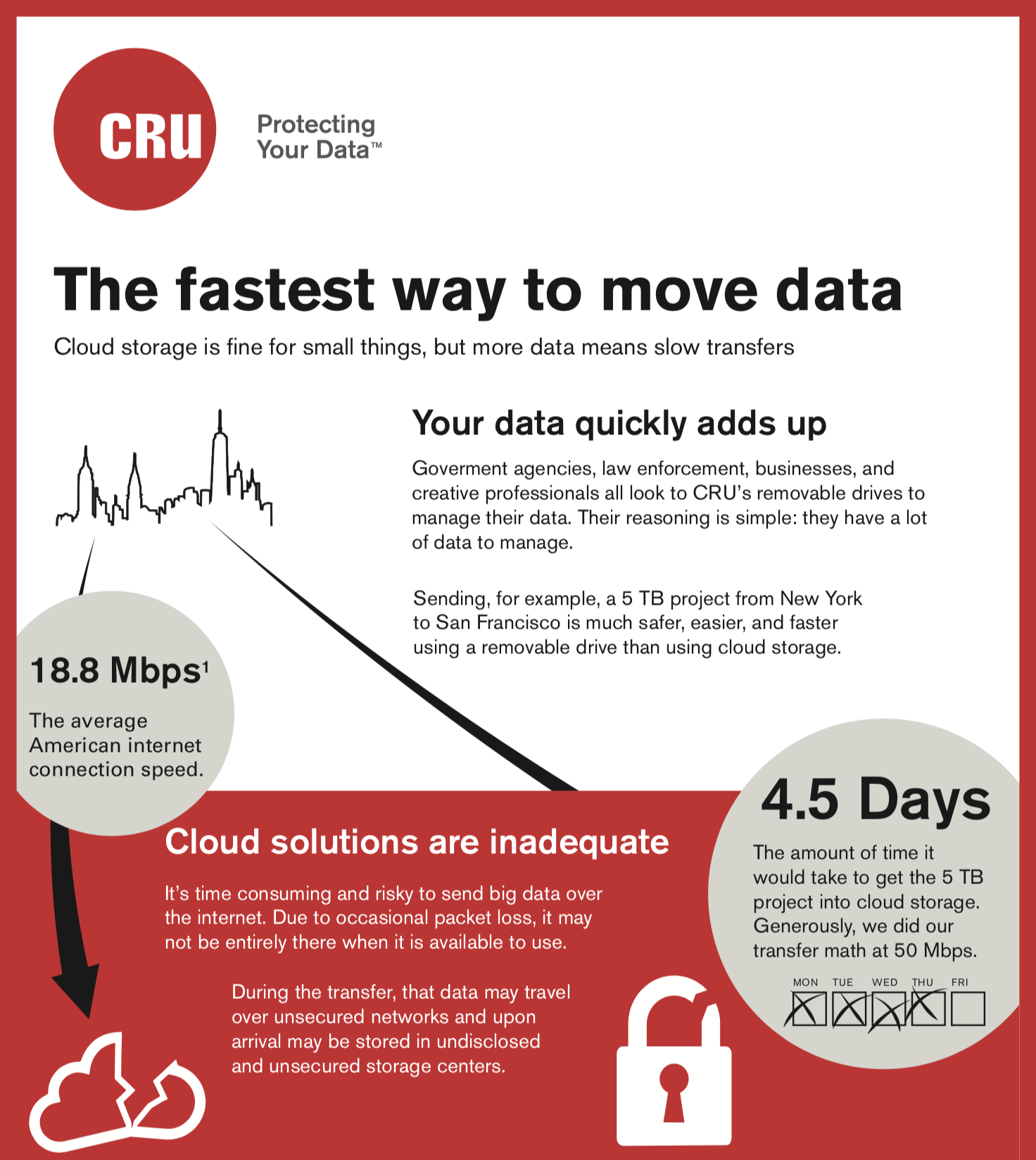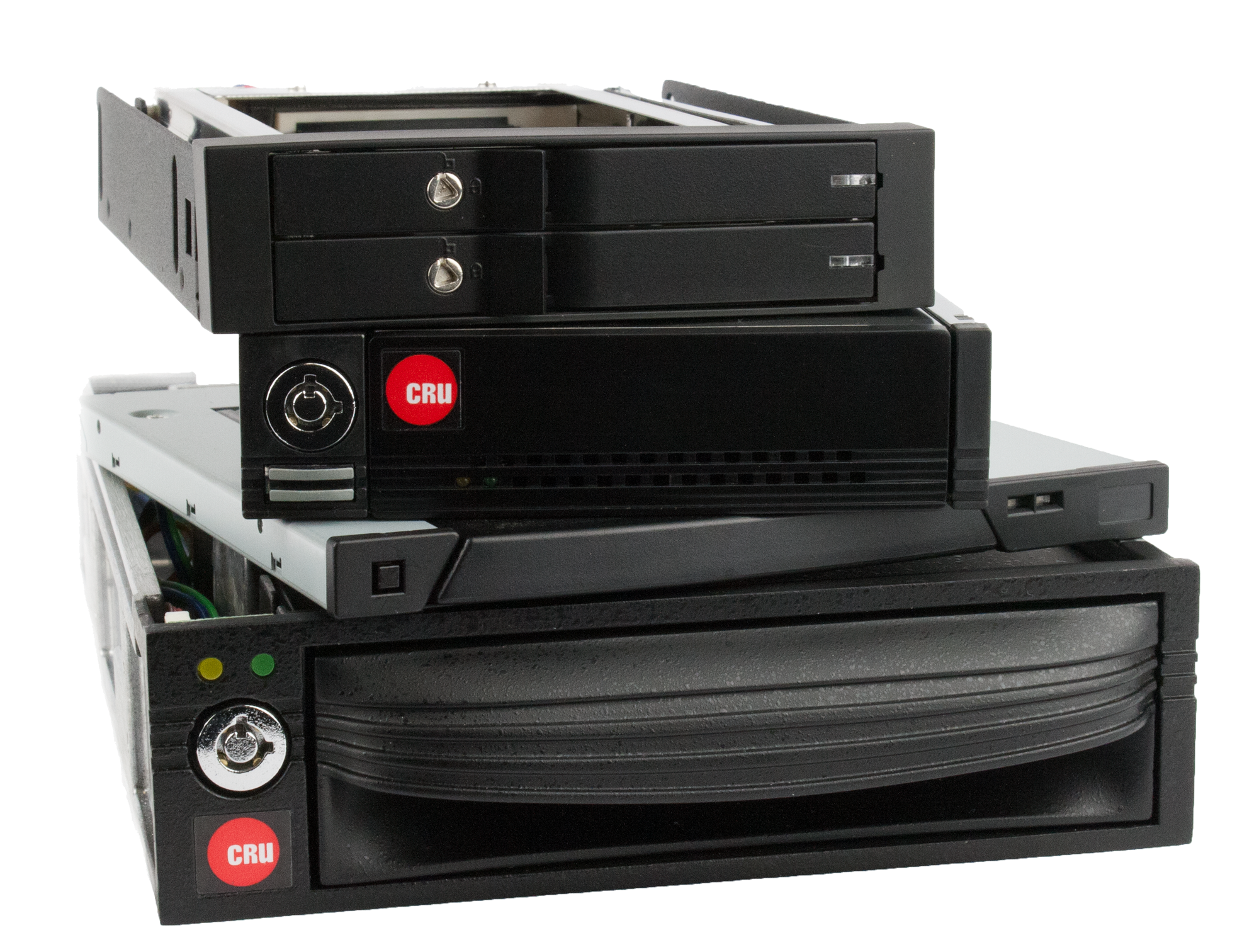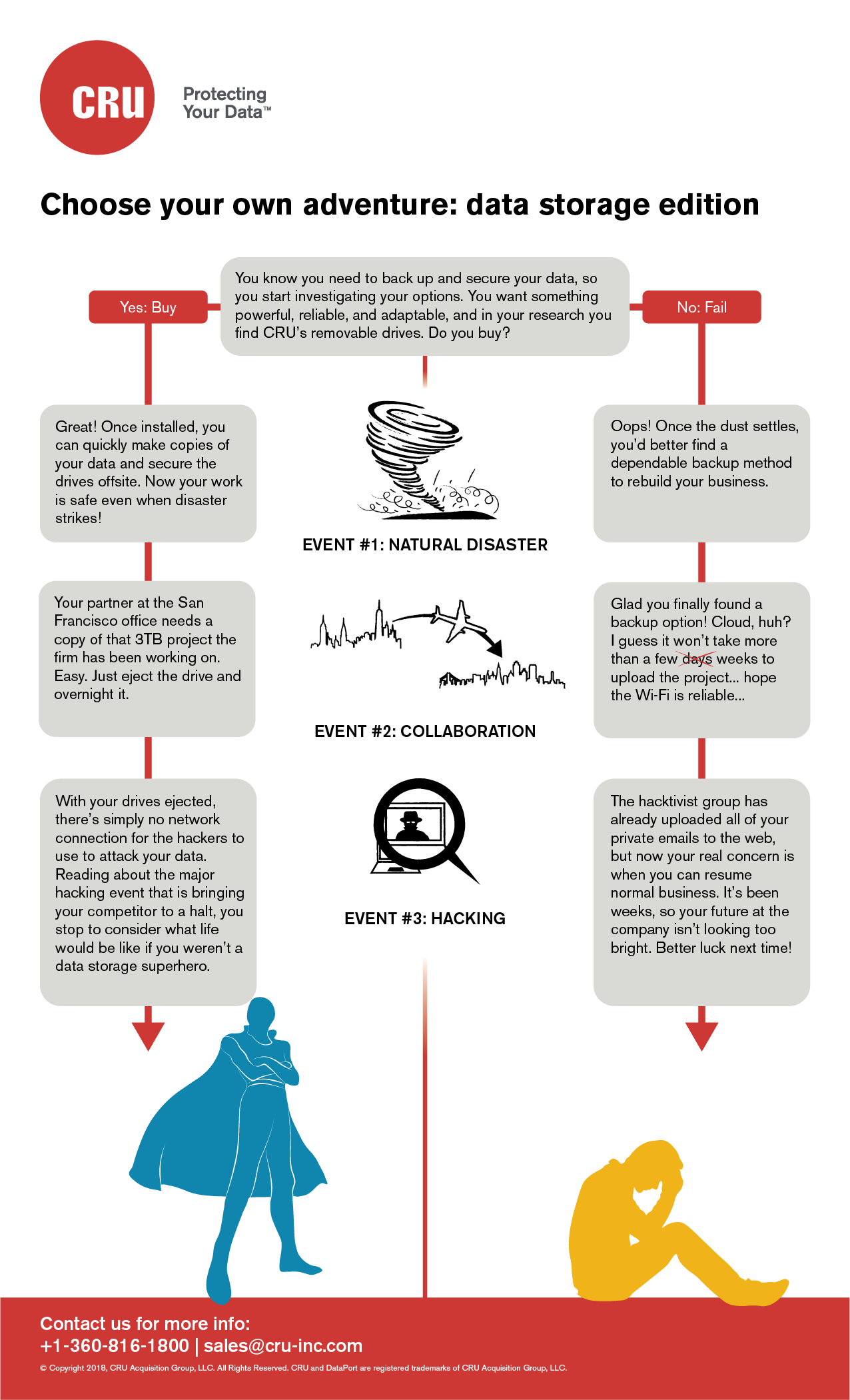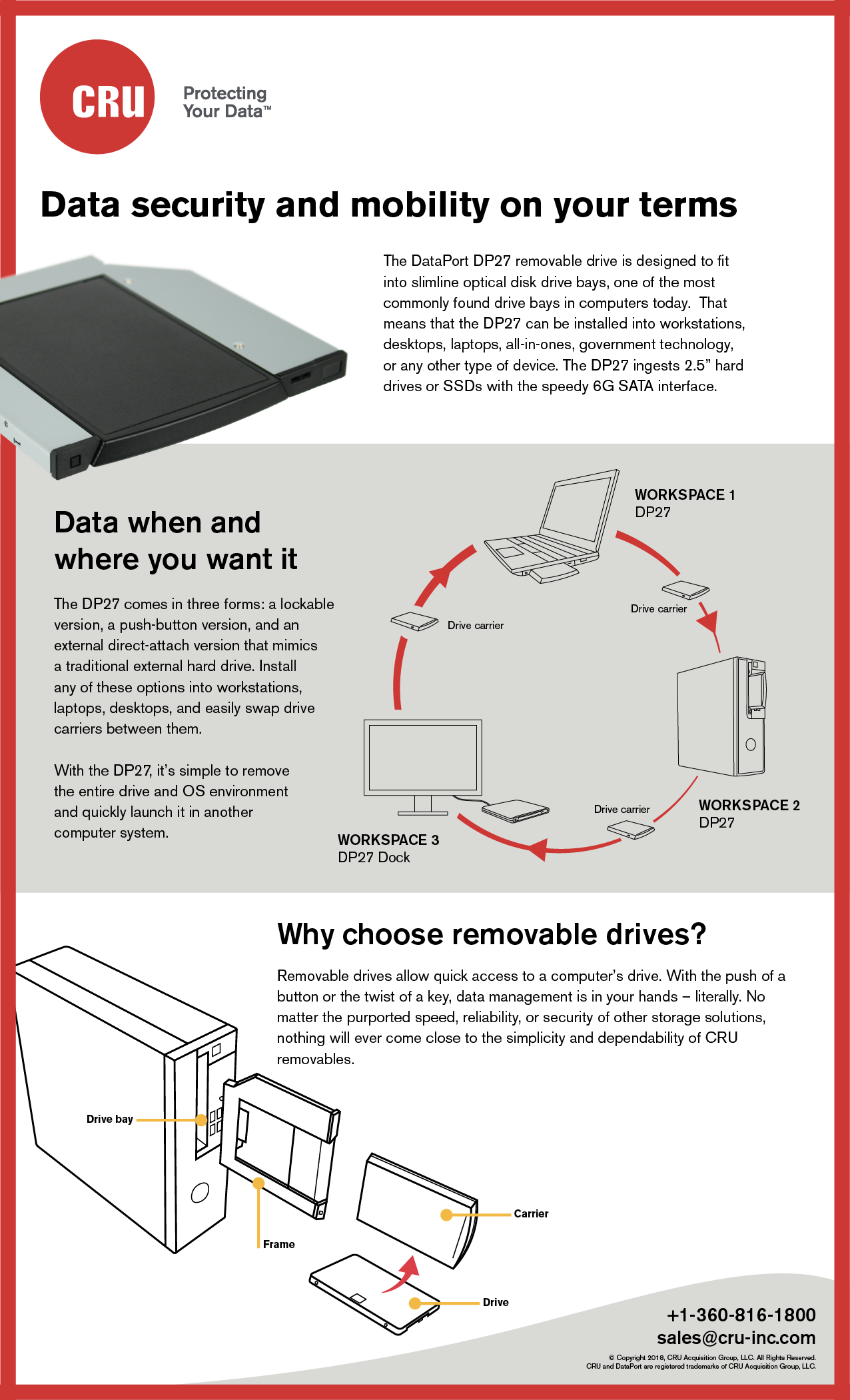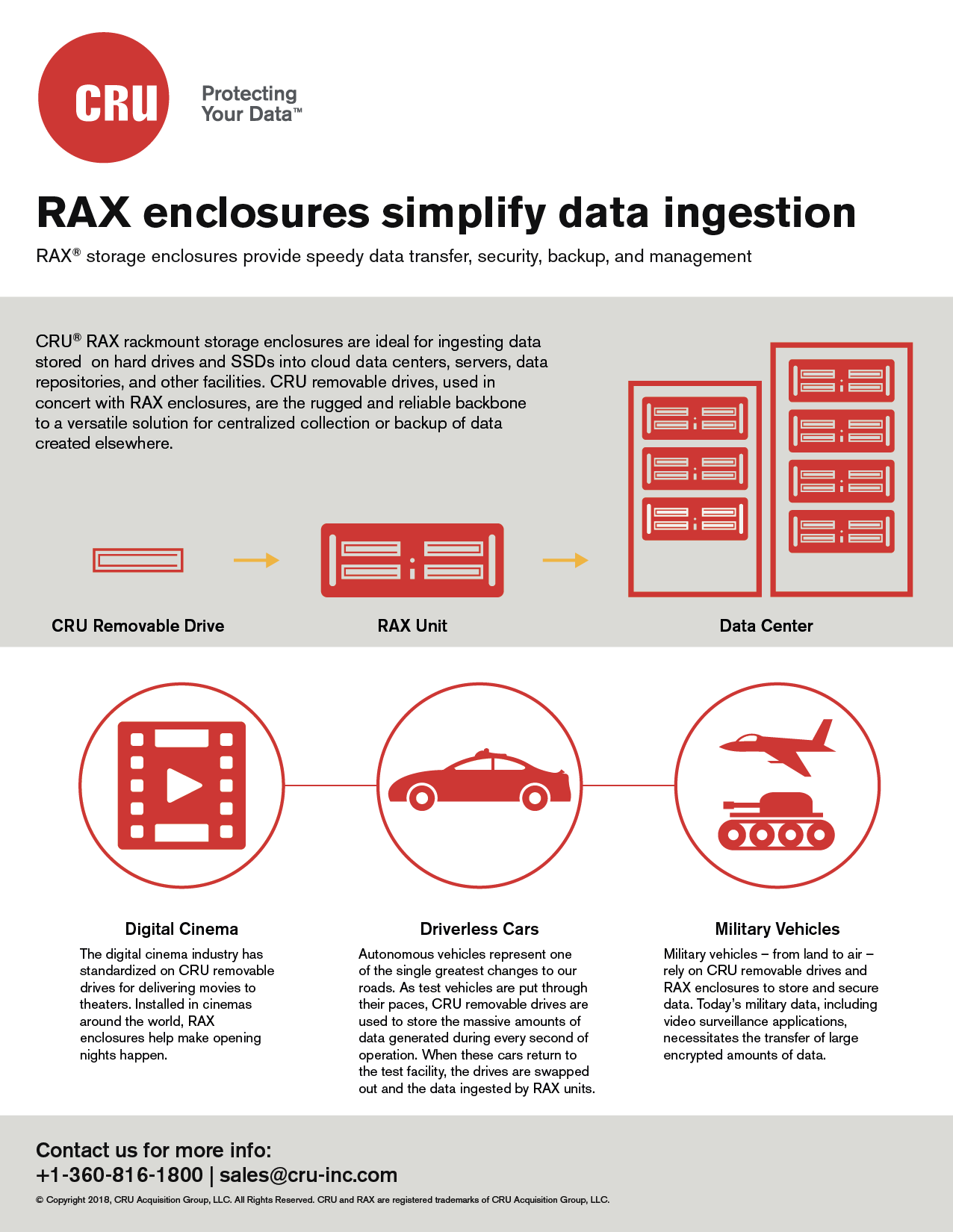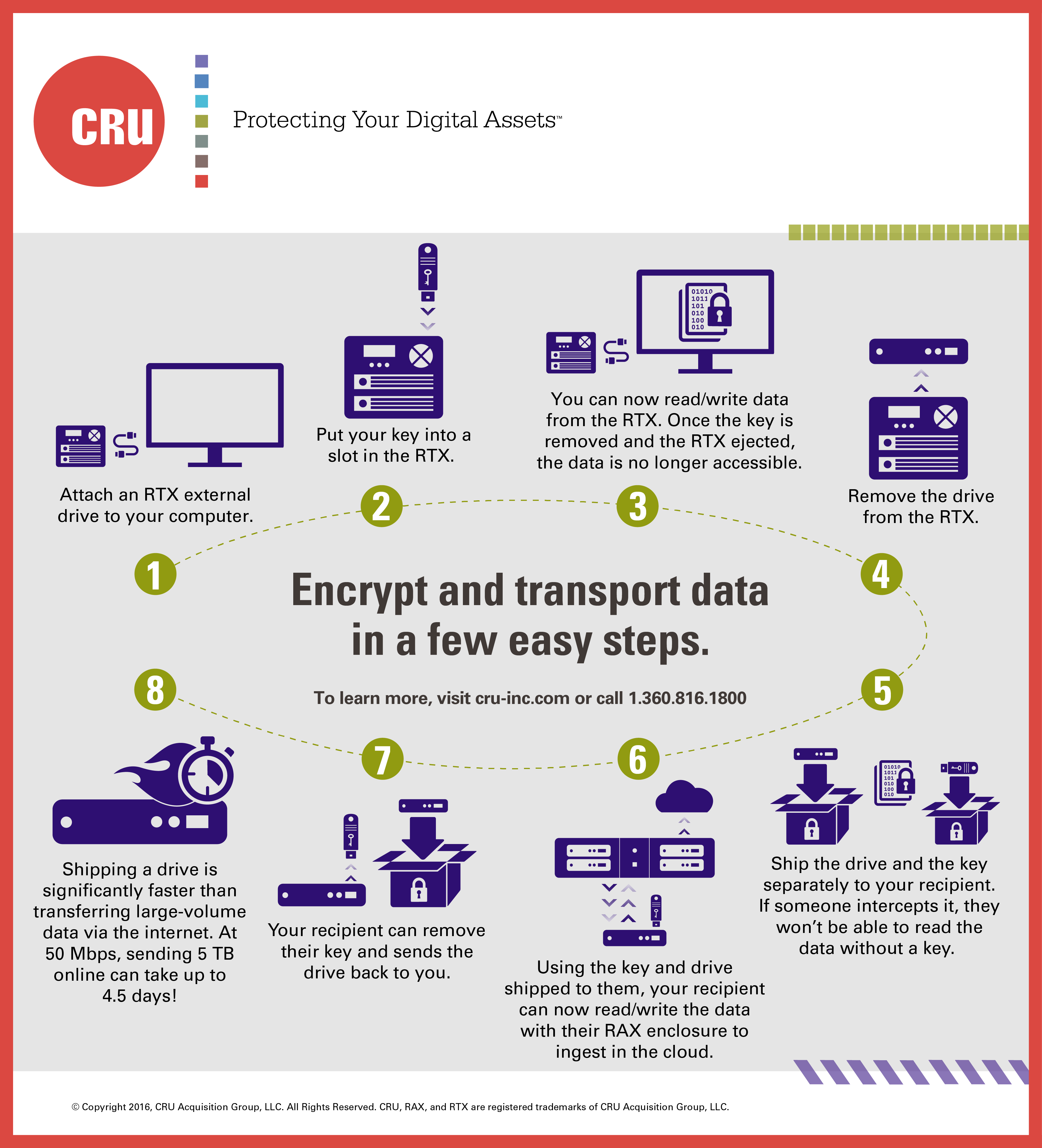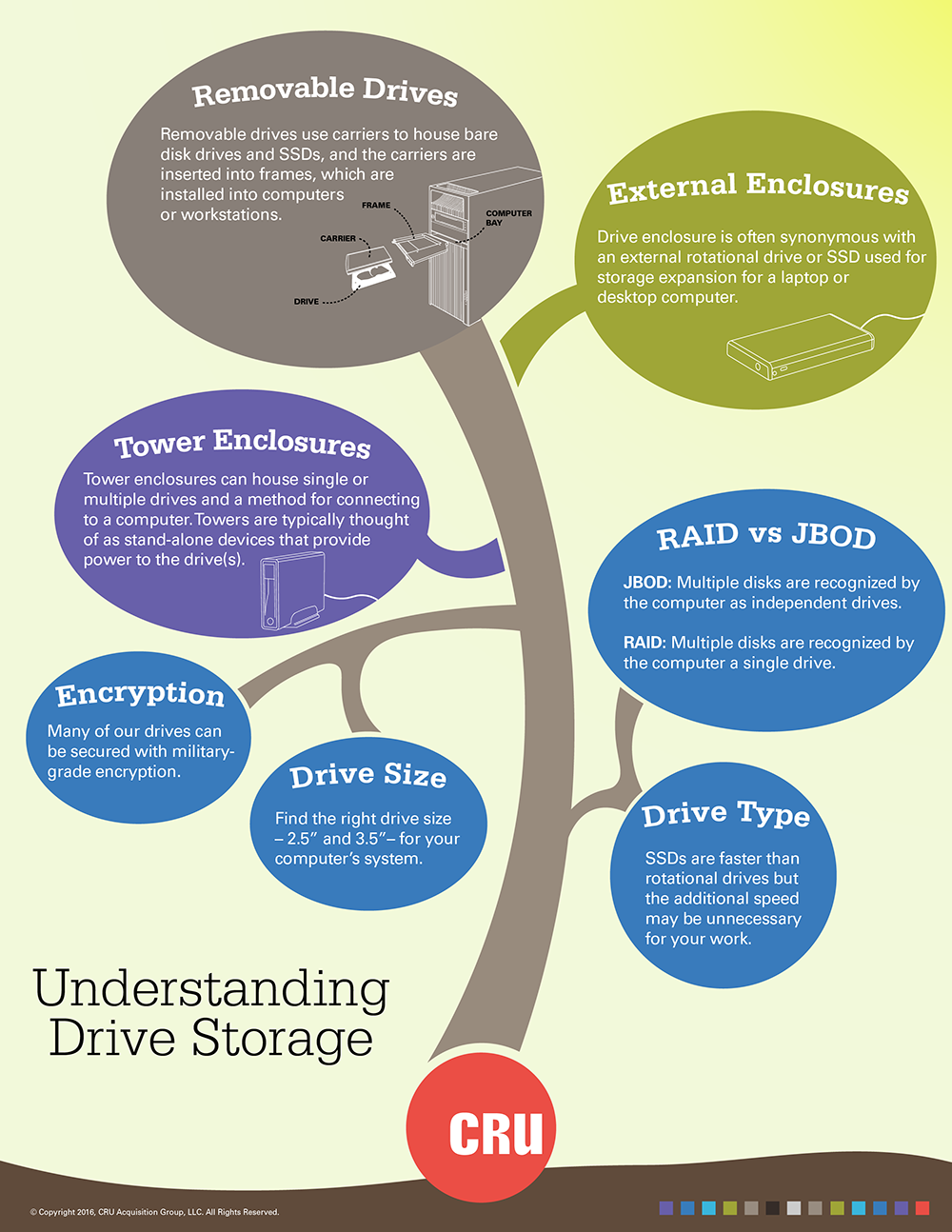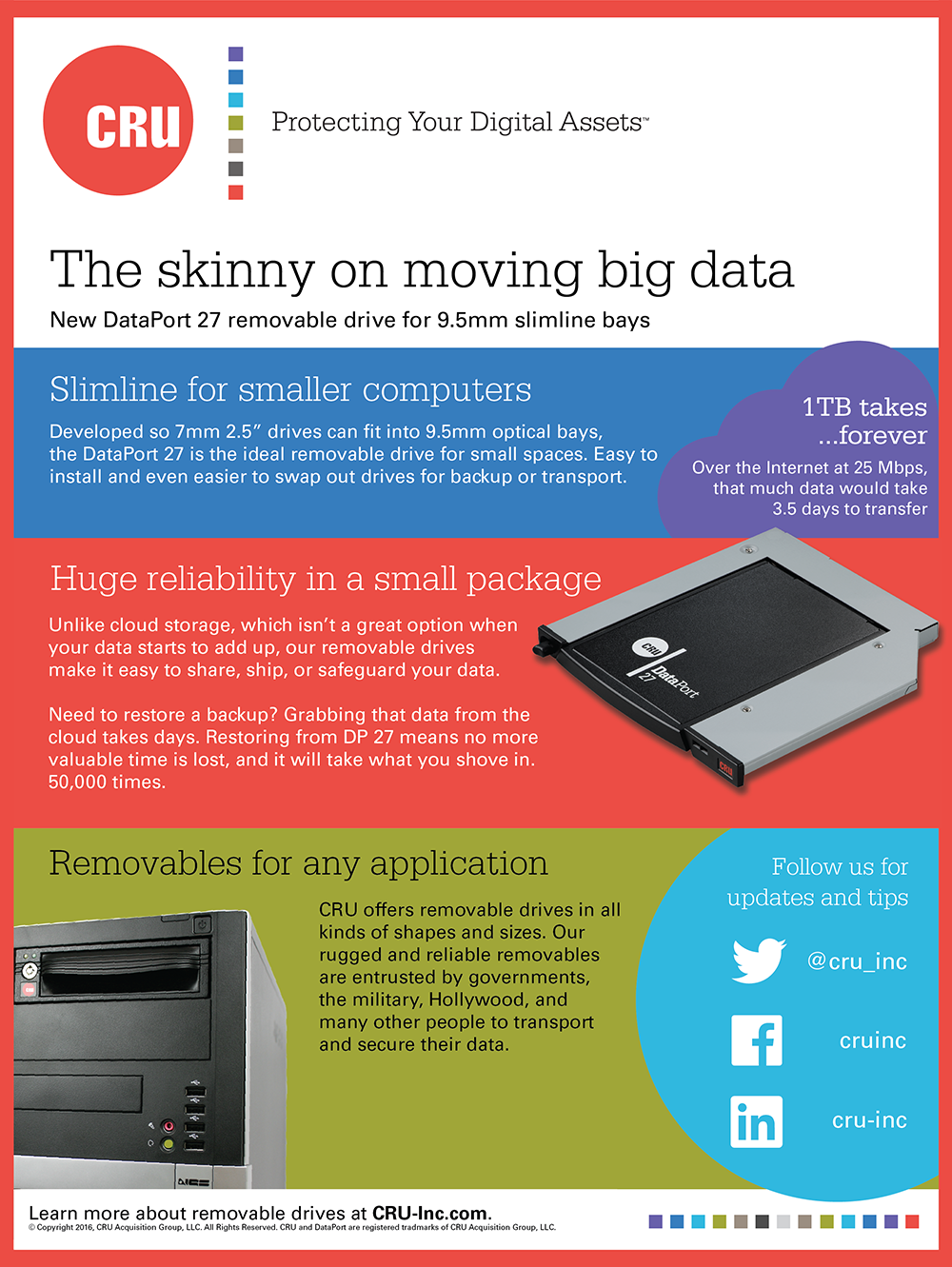CRU removable drives are the industry standard for data security and data transport. Trusted by government agencies, the military, and major manufactuers, our reliable removables offer the simplest and best way to move large data sets.
Continue reading →You might have noticed that hacking and massive data breaches have become a thing. Equifax. Target. Home Depot. The federal Securities and Exchange Commission. U.S. voter databases.
Continue reading →As you might suspect, the IT challenges that accompany certain aspects of the federal government, such as the Department of Defense, are immense.
Continue reading →By now I’m sure you’ve heard what happened last week. Hackers, who stole malicious software from the National Security Agency, waged cyberattacks via email on Friday that affected nearly 100 countries. Everyone from hospital patients in Great Britain to government officials in Russia to FedEx employees in the United States were unable to access their systems.
Continue reading →The DataPort DP27 removable drive is designed to fit into slimline optical disk drive bays, one of the most commonly found drive bays in computers today. That means that the DP27 can be installed into workstations, desktops, laptops, all-in-ones, government technology, or any other type of device. The DP27 ingests 2.5” hard drives or SSDs with the speedy 6G SATA interface.
Continue reading →Intel announced earlier this week it will acquire Mobileye, a self-driving vehicle company in a deal valued at about $15 billion, as the tech giant pushes deeper into the growing autonomous vehicle market. Founded in 1999, Mobileye specializes in creating chips and software for self-driving vehicles, such as data analysis and mapping for autonomous systems.
Continue reading →CRU removable drives are relied upon for data transport and data security. Used in conjunction with our RTX external hard drives and RAX rackmount enclosures, our removables enable government agencies, businesses, and creative professionals to transport and secure terabytes of data.
Continue reading →
